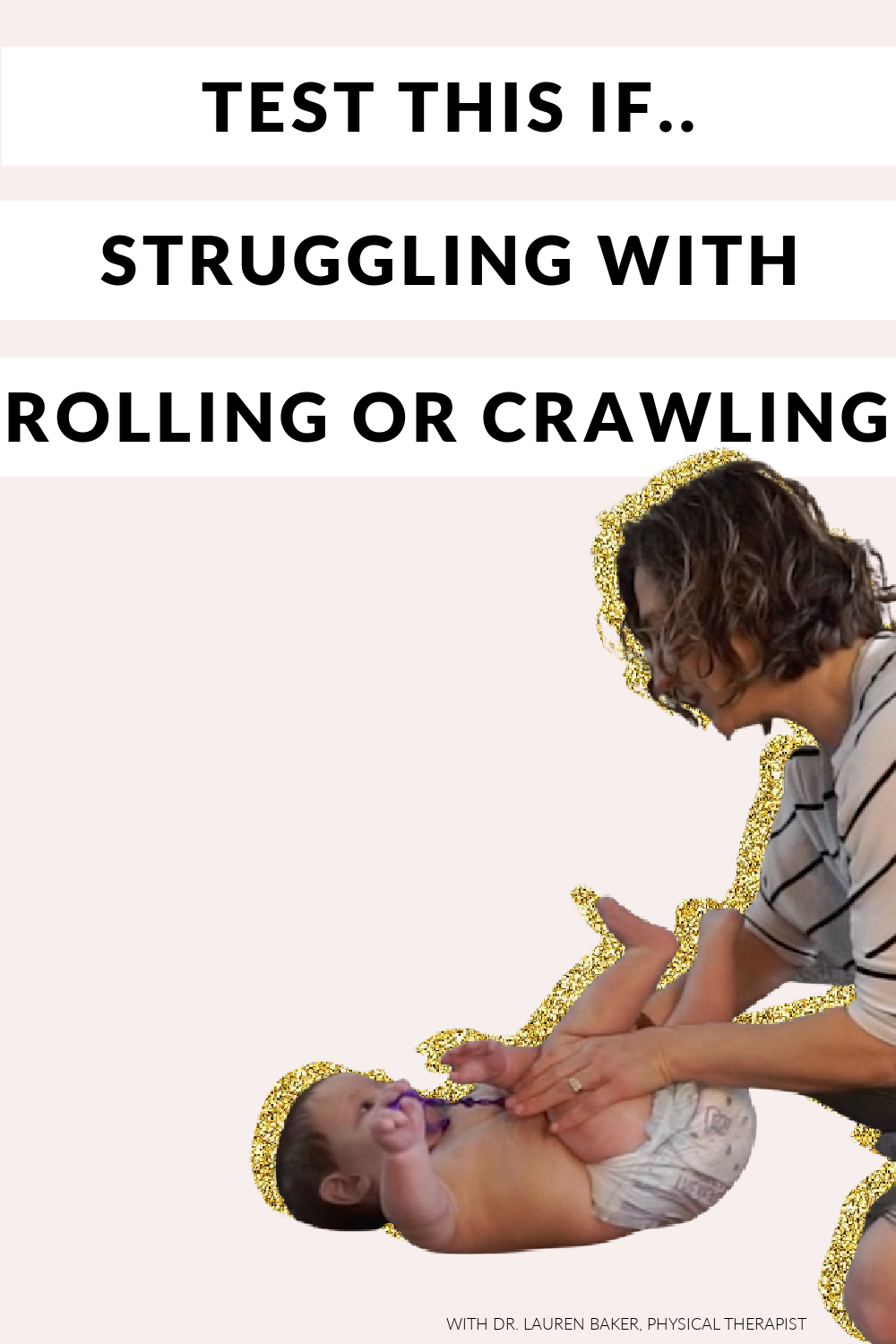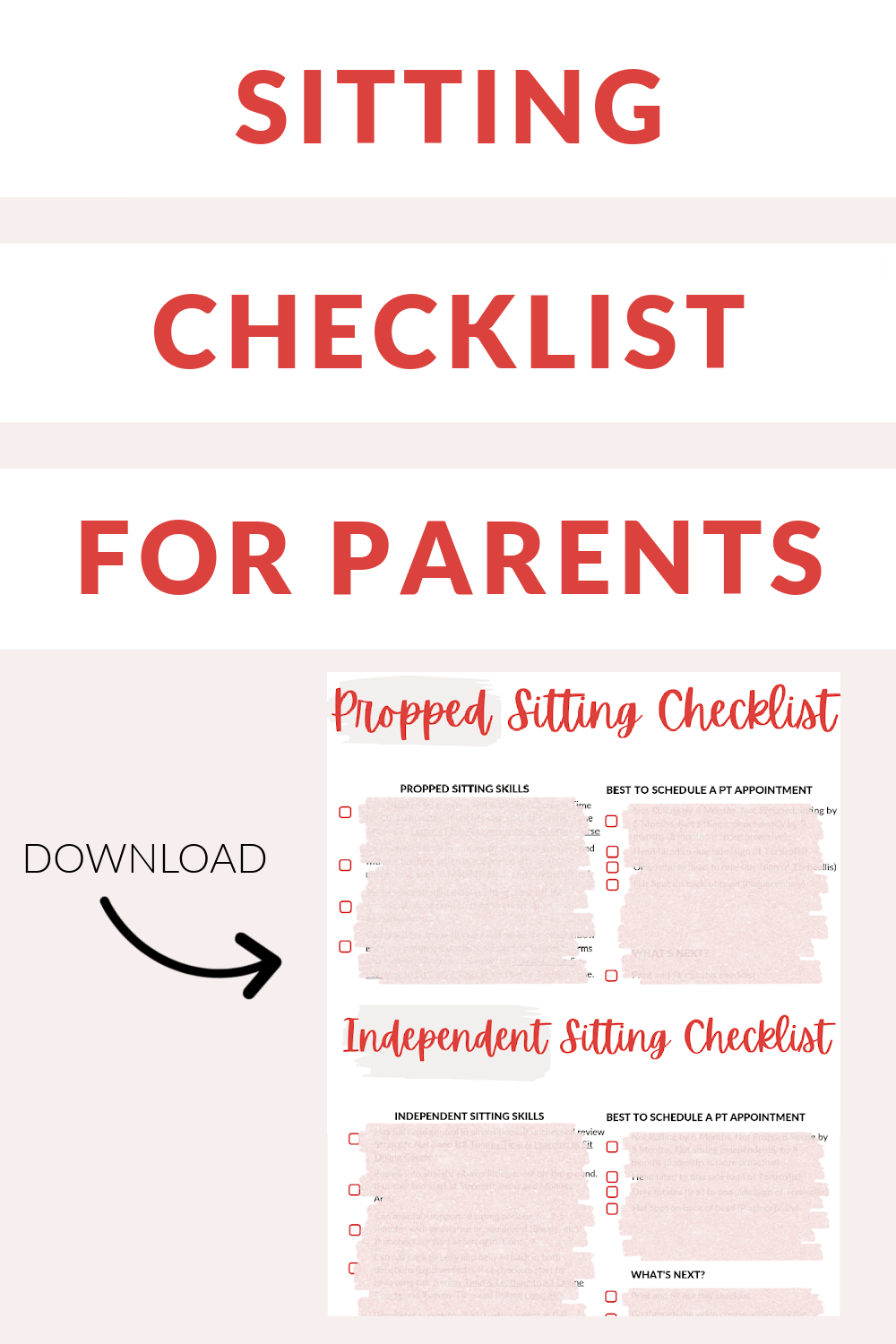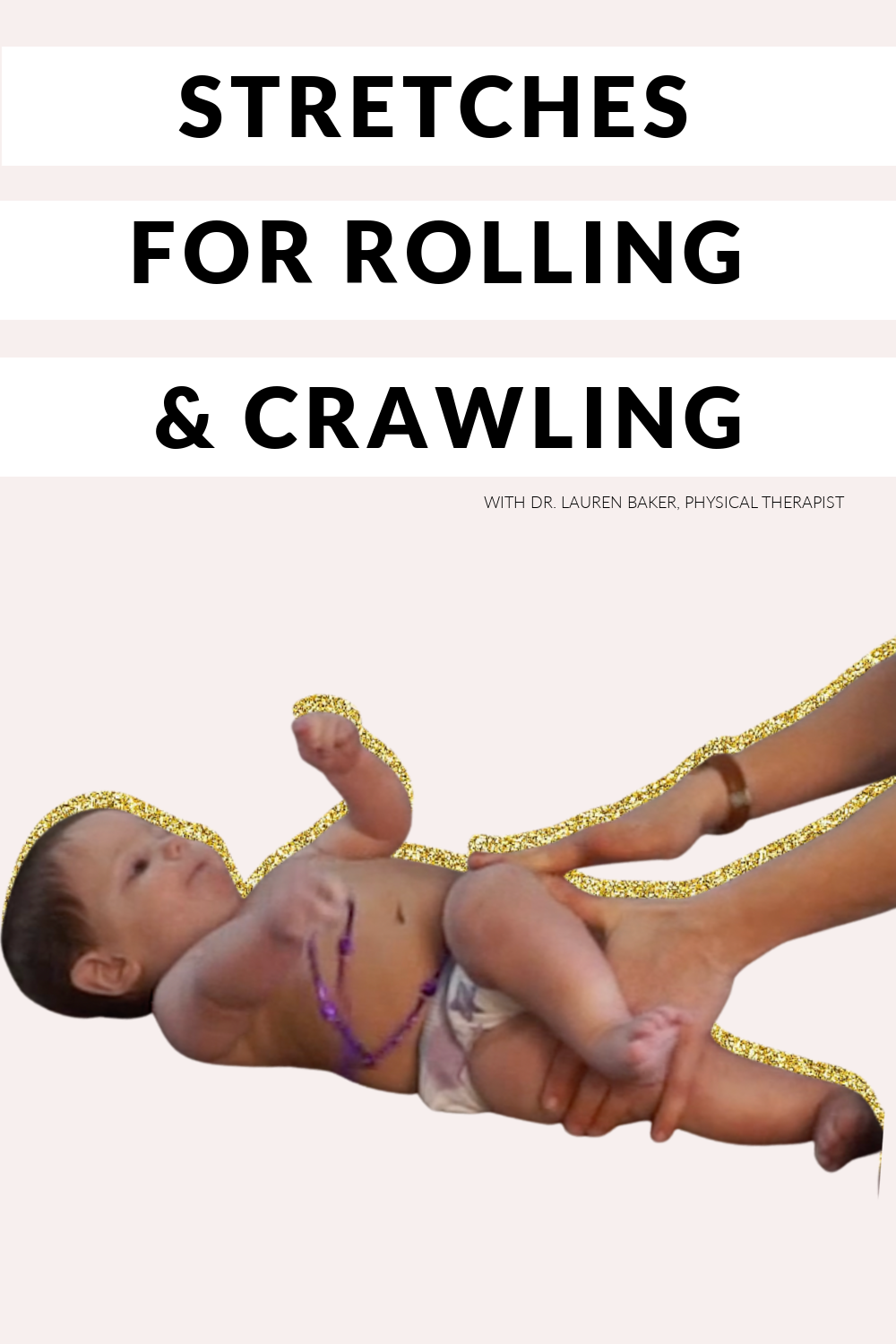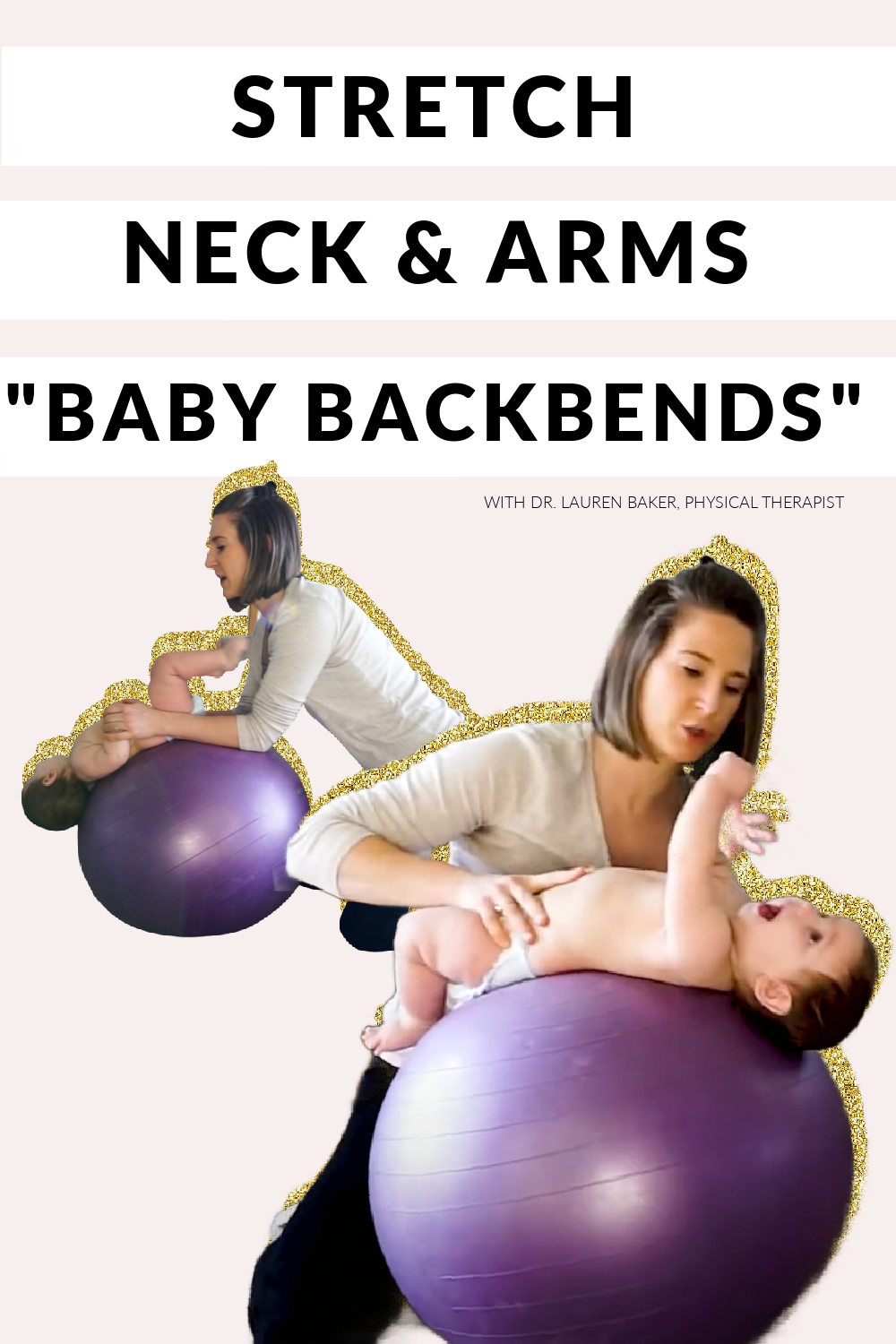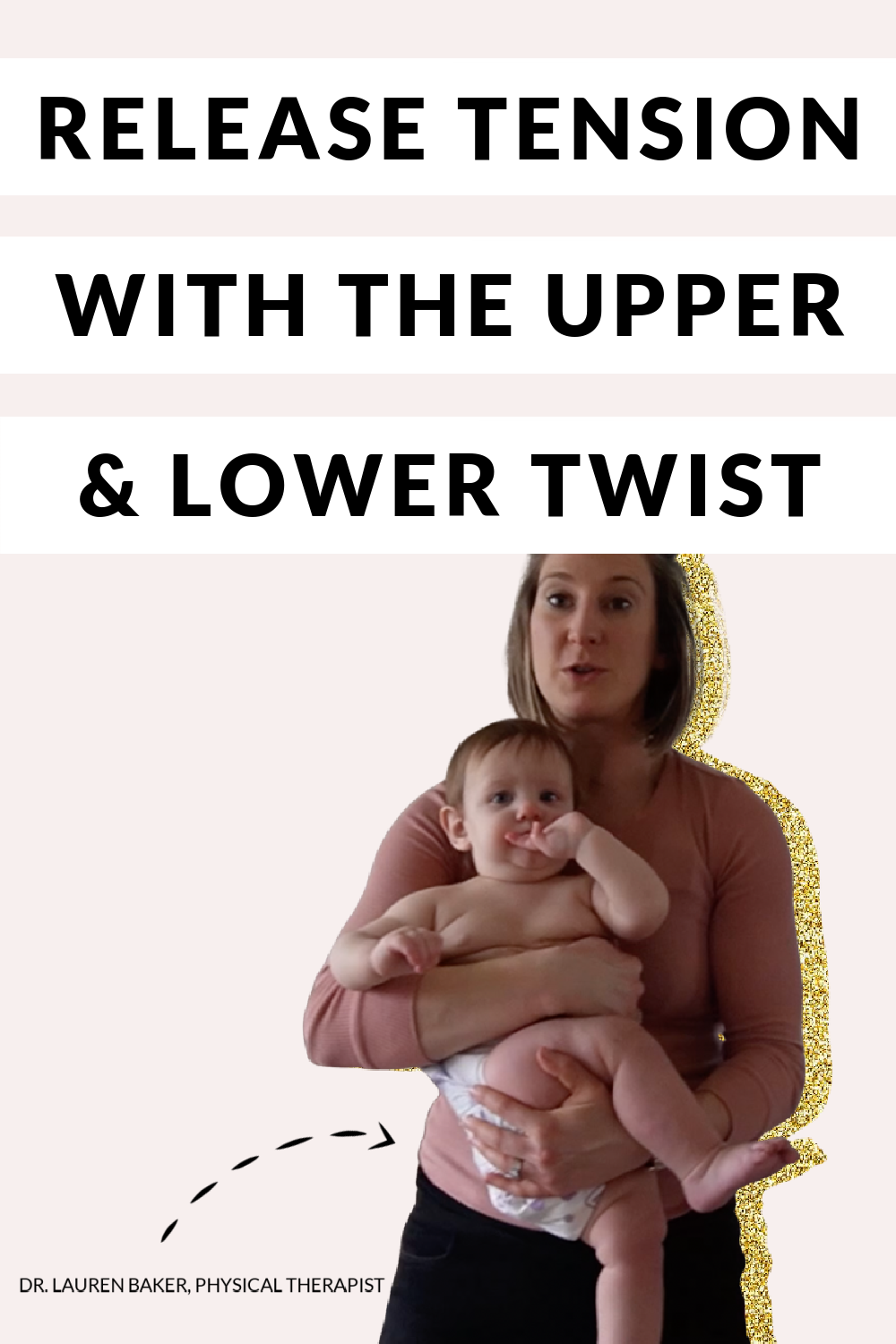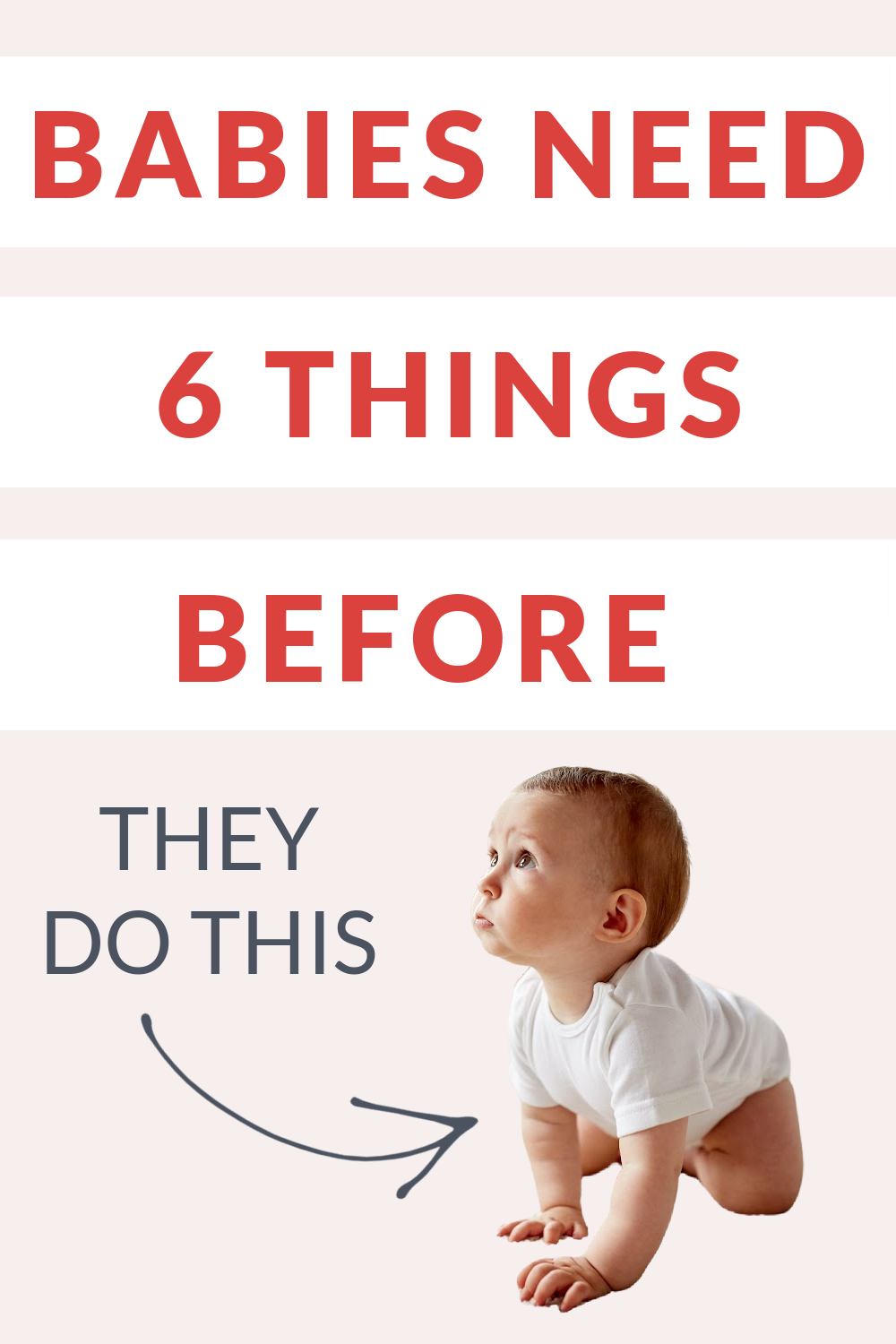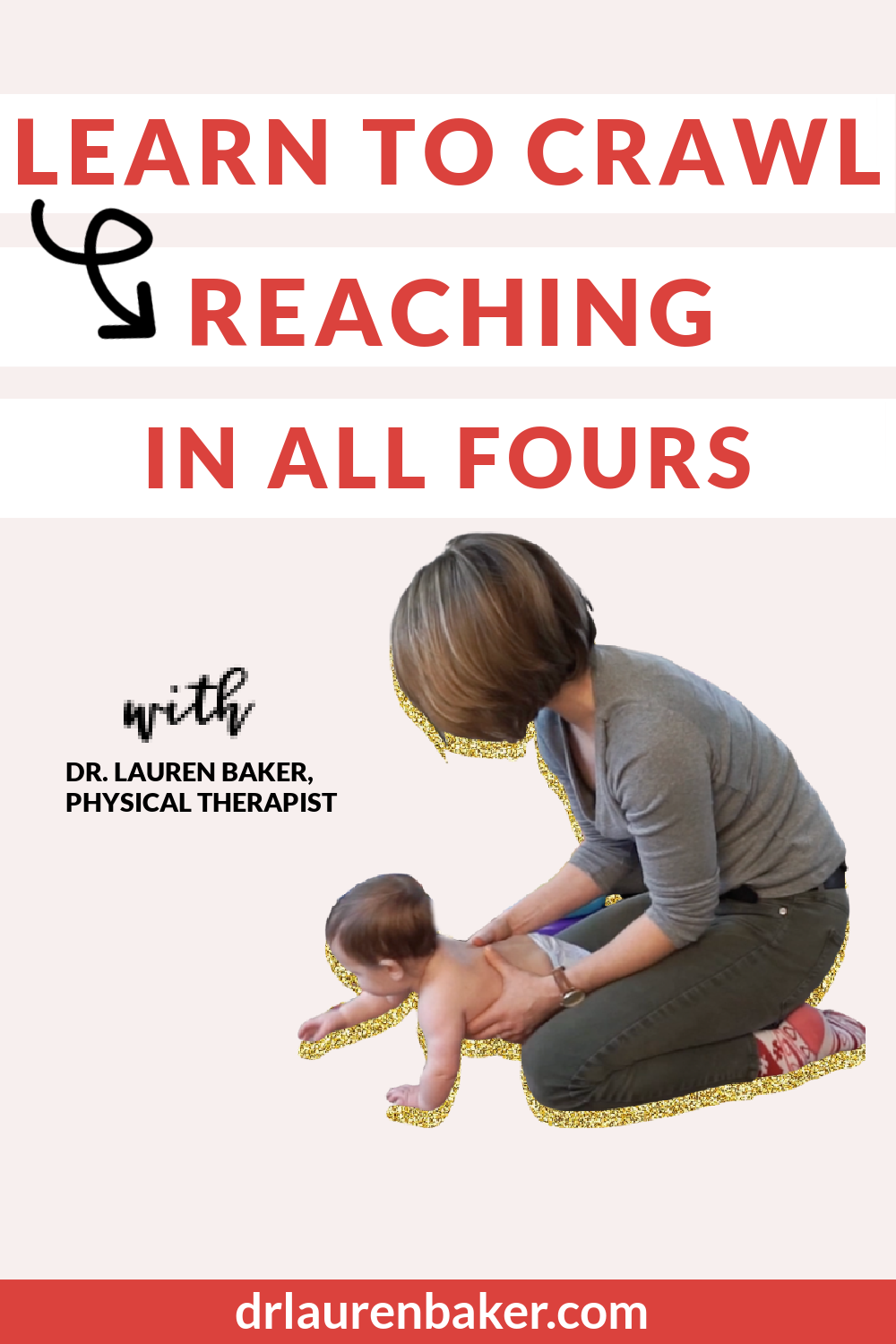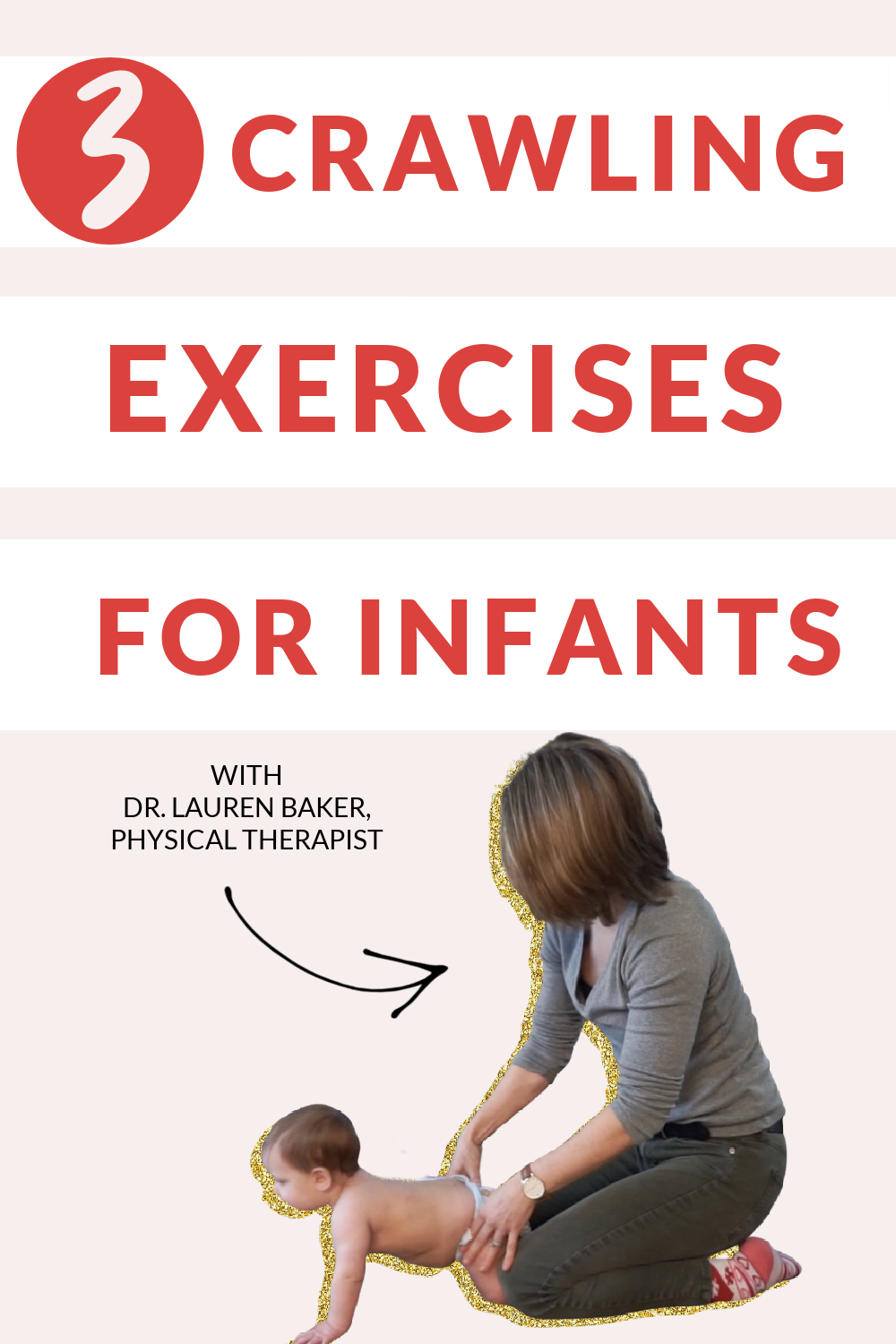How to Test A Baby’s Trunk Flexibility With This Rolling and Crawling Exercise
this blog contains affiliate links
Hello there, proactive parents! I'm Dr. Lauren Baker, a pediatric physical therapist, here to share some valuable insights into your baby's development.
Think of me as your pediatric PT bestie for all things related to helping your little ones move with confidence and ease. Today, we're diving into a topic that's both fascinating and crucial for your baby's growth: trunk mobility.
To be honest, it sounds kind of boring, but let me tell you – once you know about it, you will be able to unlock secret, hidden blocks that your baby might be experiencing if rolling or crawling is a struggle.
So, let's get started on this journey together!
Introduction to Trunk Mobility in Babies
You might not realize it, but trunk mobility is a big deal for babies. It's the foundation upon which many gross motor milestones like rolling, sitting, crawling, and walking are built.
However, many parents aren't aware that babies can have restrictions in their trunk, leading to a preference for moving in one direction or not being able to access the motion necessary in both directions, causing them to stay in one position like sitting or lying on their back.
This can cause muscle imbalances and make those milestones especially rolling and crawling more challenging than necessary.
Why It Matters to Test A Baby’s Trunk Flexibility
Muscle Imbalances: Tightness in the trunk can lead to asymmetrical movement patterns (this means that one side moves well, while the other doesn’t), potentially impacting your baby's ability to reach milestones smoothly. This can also occur globally if babies are tight in both directions.
Gross Motor Milestones: Proper trunk mobility is essential for rolling back to belly and belly to back, sitting independently, crawling, and eventually walking.
Quick Trunk Mobility Test: Elbow to Knee
For the most comprehensive information and examples on a baby please watch the youtube video below.
I'm excited to share a simple mobility test that you can do at home to check for trunk tightness or decreased mobility in your infant. This test can reveal if there's a significant difference in mobility from one side to the other.
How to Perform the Infant Trunk Mobility Test
Positioning: Gently place your baby on their back, then grasp under their left knee with one hand and behind their elbow with your other.
Movement: Gently hold beneath your baby's elbow and try to touch it to the opposite knee, only going as far as their resistance allows (never pushing past their resistance and always stopping when there is no more slack available).
Notice the motion of the knee coming to the elbow occurs at your baby's pelvis not their actual hip joint. The bottom of the baby should lift up into flexion (baby’s back and bottom are rounded).
Observation: Notice if one side seems easier or more difficult for your baby compared to the other. If one side the elbow and knee easily come together, touching or almost touching but the opposite is 3-4 inches a part, note the side that is difficult and approximately how far away the knee is from the elbow.
TIMESTAMPS:
2:32 Test for Babys Trunk Flexibility
3:14 indepth breakdown of how to complete the test
4:27 what this means and how it could impact crawling or rolling
TOY IDEAS:
Best Toys for Babies Learning to Roll
Best Toys for Babies
PT Approved Equipment/Containers for Babies
Tummy Time Toys
Understanding the Infant Trunk Mobility Test Results
If you find that there's a noticeable difference between the two sides, it might indicate trunk restrictions. This doesn't mean your baby won't hit their milestones, but they might face more difficulties.
It is important to note trunk restrictions, especially if a baby if struggling with a functional task, in their cases movement milestones like rolling, sitting, crawling, or walking.
What Differences Mean and How to Break Them Down
Every child is different, so the follow is a typical understanding of movement limitations; however, not every single child will present this way and it’s important to note how your child is moving and if there is any tightness present AND difficulty with milestones, to reach out to a pediatric PT to further assist in resolving.
Right Elbow – Left Knee is difficult or not as close: This is likely due to decreased range of motion or mobility in the right rotation of the upper trunk and/or left side bend of the lateral trunk (upper and/or lower trunk).
Babies may experience difficulty with:
Back to belly over the left arm
Belly to back over the right arm
Pivoting on their belly to the left
Sit to all fours to the right
Crawling on all fours
They may also present with Hitch crawling with R foot on the ground and L knee on the ground
Left Elbow – Right Knee is difficult or not as close: This likely is due to decreased range of motion or mobility in the left rotation of the upper trunk and/or right sidebend of the lateral trunk (upper and/or lower trunk).
Babies may experience difficulty with:
Back to belly over the left arm
Belly to back over the right arm
Pivoting on their belly to the right
Sit to all fours to the left
Crawling on all fours
They may also present with Hitch crawling with L foot on the ground and R knee on the ground
Both are difficult or pretty far apart > 1 inch: Babies may show difficulty in back to belly / belly to back / crawling / or transitioning in/out of all fours. They may also be okay with one direction but not all directions ie back to belly or belly to back over one arm but not in all four directions (belly to back over R arm, belly to back over L arm, back to belly over R arm, back to belly over L arm).
They may also present with booty scooting or prolonged army crawling, because these positions do not require side to side (side bend) or rotation directions.
If You Notice Asymmetries
Seek Professional Help: A pediatric physical therapist can provide hands-on assessment and personalized strategies for babies or speaking to a pediatric physical therapist through an online parent consultation can help you understand the movement that your child is presenting with and assist in finding either proactive play strategies or providers in your area.
Don't Panic: Consider any limitations as a data point to be proactive rather than a cause for alarm. Often, these “tests” are orthopedic in nature indicating that the baby is struggling with muscle tightness, not necessarily difficulty in coordinating the movement together.
Pediatric physical therapists can help you figure out any red flags for development if you do have more global concerns.
The Impact of Infant Trunk Mobility on Development
Restrictions in trunk mobility can influence various developmental milestones because these activities require multi-plane movements, such as rotating the trunk while also bending at the trunk, while fighting gravity.
Rolling is the most specific milestone in which trunk rotation and side bending can significantly limit a baby’s experience and achievement of movement milestones. See the Learning to Roll book, that I released in October 2023 for a comprehensive guide to improve trunk mobility and master tummy time and rolling in all four directions.
When a baby is beginning to sit independently they need trunk mobility is key to maintaining balance and posture, trunk mobility allows the muscles to turn on and off in sequence during different demands of gravity such as reaching to the front or side.
When babies move from their back to sitting and sitting to all fours, they need both side bending and rotation in order to do it. Most babies who struggle with rotation, begin to choose alternative, disadvantageous movement patterns such as booty scooting instead of crawling on all fours.
This is often due to them not having the available movement and with focused intention and support, they can often achieve crawling on hands and knees.
If you're concerned about your baby's trunk mobility or just want to ensure they're on the right track, remember, I'm here to help, you can schedule an online parent consultation at any time.
Curious About Learning More on Tummy Time, Rolling, or Both?
The absolute best book for parents on tummy time and rolling is: Tummy Time and Learning to Roll: A Baby Development Book for Ambitious Parents and Pediatric Healthcare Providers to Help Babies Learn to Roll Independently. The book comes with a free online video course to help parents fully understand how to complete the different exercises, printable checklists to know exactly where your baby is at, and when to reach out for additional help.
This book was written by Dr. Lauren Baker, PT, DPT, ATC, MTC, who is a Pediatric Physical Therapist in Boise, Idaho, trained in helping parents learn how to help their babies move and master their milestones. She loves teaching parents how to see how their babies are moving as well as how to influence those movements though play positions and exercises to help babies move with confidence and ease.
Tummy Time and Learning to Roll is the first book in the Proactive Play series written by Pediatric Physical Therapist Dr. Lauren Baker in order to help Ambitious Parents and Pediatric Healthcare Providers learn how to help babies master tummy time and learn to roll. It is meant to help ambitious parents understand baby development from birth to six months (tummy time to rolling).
This book is a mix of easy-to-follow and more in-depth information than is typically found in baby development books because Dr. Baker believes parents deserve to have all the information at their fingertips.
This book breaks down each piece of movement in checklists so that parents know what their babies need for tummy time and rolling. It also covers what areas might limit a child with rolling, why it is so important, and when to seek help from a pediatric PT.
This book comes with colored photos and easy-to-follow demonstration videos that can help parents implement safe, strategic play-based exercises with their babies in 20 minutes per day.
A Great Resource For:
Parents and Pediatric Healthcare Providers of babies 0-6 months
Parents of babies who are struggling with tummy time, rolling back to belly, belly to back, or only to one side
Access to simple, easy-to-follow videos of play positions and exercises
Learning the four pillars of movement needed in order to master rolling
240+ Color Photo Examples of:
Tummy Time, Sidelying, and Back Play
Developmental Toys and Equipment
Hand Placement and Strategic Play Positions
Common Areas of Restriction or Weakness
When To Reach Out For Help
What If You Want Extra Help?
If you have concerns about their movement, remember, you can always reach out to a pediatric physical therapist. It's your right as a parent to advocate for your child's development.
Sometimes, a few tips and tricks are all you need to get your baby moving better. We're here to support you and release those mama worries. If you are looking for in home pediatric physical therapy, check our listing of therapists.
For those eager to learn more or seeking personalized guidance, I offer online video parent consultations internationally which can be scheduled by clicking here. I am dedicated to answering questions and providing tailored play activities for each unique developmental journey.
When Should Babies Receive Pediatric Physical Therapy?
Parents can call and schedule with a Pediatric Physical Therapist at any time, for any concern in all fifty states without a referral from their Pediatrician.
Pediatric Physical Therapy is medically indicated in all babies who are not rolling in all four directions by six months (back to belly over their right arm AND left arm + belly to back over their right arm AND left arm).
Pediatric Physical Therapy is medically indicated if you notice a flat spot on the back of an infants head (possible plagiocephaly), a tilt of their head consistently to one side (ear to shoulder - possible torticollis), or a rotation preference of their neck (consistently look only to the right or left - possible torticollis).
Many Pediatric Physical Therapists including Dr. Baker, can successfully treat flat spots (Plagiocephaly) without a helmet with a combination of therapy and positioning strategies if seen prior to 4 months (0-3 months is ideal). Dr. Baker uses the Baby Begin Method of repositioning.
Flat spots can be due to in-utero positioning, rotational preference (right sided flatness most common) and babies are at an increased risk for flatness if they are male, were breech, multiple birth, premature, have difficulty with tummy time, or are in containers > 2 hr/day.
Final Thoughts
Your role in your baby's developmental journey is monumental, and by being proactive, you're setting the stage for their future success. If you have any questions or need guidance, feel free to reach out. If you haven’t yet, please consider subscribing to the youtube channel or share it with a parent friend.
Together, we can ensure your baby moves with confidence and joy!
Thank you for joining me today, and remember, you're doing an incredible job as a parent. Stay tuned for more tips and insights to support your baby's growth and development!

